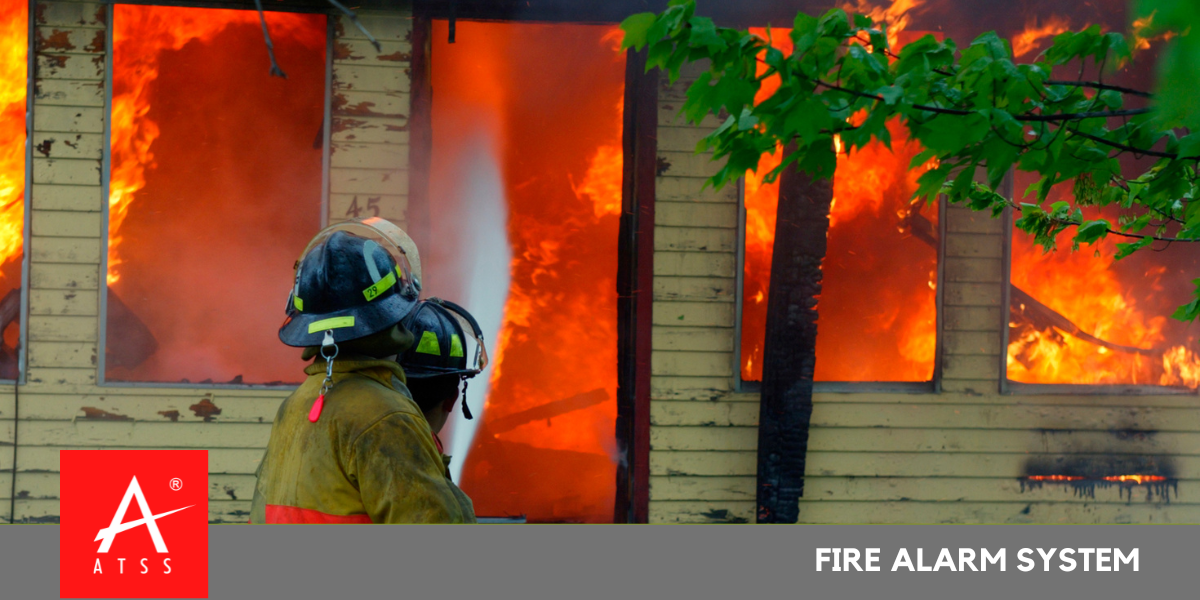
Fire Alarm System
Fire Alarm System: Your Complete Guide to Protecting Lives and Property
What if one system could save lives, protect assets, and minimize fire damage—before help even arrives? That system is a Fire Alarm System. Whether you’re managing a residential building, an office, or an industrial site, fire safety is non-negotiable.
A Fire Alarm System is more than just bells and buzzers. In fact, it’s a highly engineered solution designed to detect early signs of fire, then alert people, and finally ensure timely evacuation. Through this comprehensive guide, you’ll discover how Fire Alarm Systems work, what’s more, the essential components they include, and most importantly, why investing in the right system could be the smartest decision for your property.
What Is a Fire Alarm System?
A Fire Alarm System is an active fire protection system that detects fire, smoke, carbon monoxide, or heat. It alerts occupants through visual and audio notifications. It can also notify emergency services and control various fire suppression mechanisms like sprinklers and ventilation.
This system includes interconnected devices that work together to ensure maximum safety during emergencies.
Key Components of a Fire Alarm System
1. Initiating Devices
These are the sensors and manual tools used to detect the presence of fire. They include:
- Smoke Detectors: Photoelectric, ionization, beam, and air-sampling types.
- Heat Detectors: Rate-of-rise and fixed temperature detectors.
- Manual Pull Stations / Call Points: Activated by individuals during emergencies.
- Water Flow Switches: Triggered when water flows through sprinkler pipes.
2. Fire Alarm Control Panel (FACP)
This is the brain of the Fire Alarm System. It:
- Receives data from initiating devices
- Activates alarms and notification appliances
- Controls auxiliary systems like elevators, HVAC, and doors
3. Notification Appliances
These devices alert occupants via audible and visual signals. Examples include:
- Bells and Sirens
- Horns and Strobes
- Voice Evacuation Speakers
- Tactile Alert Devices for hearing-impaired individuals
4. Power Supply
Fire alarms require reliable power sources:
- Primary Supply: Typically commercial electricity
- Secondary Backup: Sealed lead-acid batteries or generators
- NAC Power Boosters: For systems with extended notification appliance circuits
5. Signaling Line Circuits (SLCs)
SLCs transmit data between the control panel and devices. They support multiple addresses and enable real-time diagnostics.
6. Supervisory and Trouble Signals
- Supervisory Signals: Warn of compromised system readiness (e.g., closed water valves)
- Trouble Signals: Indicate wiring faults, power loss, or disconnected devices
7. Remote Annunciation Units
Remote displays that show fire alarm information and locations. Useful for firefighters and security personnel.
Why a Fire Alarm System Is Essential
Save Lives
The primary function of a fire alarm system is to provide early warning, giving people time to evacuate.
Minimize Property Damage
Quick detection can help initiate suppression efforts faster, reducing fire spread.
Legal and Insurance Compliance
Many jurisdictions require Fire Alarm by law. Insurance providers often demand them for high-value properties.
Peace of Mind
Knowing your system is active, tested, and responsive improves building safety and trust.
Types of Fire Alarm Systems
Conventional Fire Alarm
- Divide the building into zones
- Inexpensive, best for small spaces
Addressable Fire Alarm
- Each device has a unique address
- Pinpoints exact location of the emergency
- Ideal for large and complex buildings
Wireless Fire Alarm
- No physical wiring between devices
- Perfect for historical buildings or fast retrofits
Fire Alarm Devices at a Glance
| Device Type | Description |
|---|---|
| Manual Pull Station | Manual fire alarm activation at exits |
| Smoke Detector | Detects smoke particles (Photoelectric/Ionized) |
| Heat Detector | Measures temperature changes |
| Beam Detector | Laser detection for large areas |
| Water Flow Switch | Detects sprinkler activation |
| Air Sampling Detector | For high-sensitivity environments |
Maintenance and Testing
Regular maintenance is vital to ensure system reliability:
- Test all initiating devices monthly
- Replace batteries semi-annually
- Inspect control panel for error logs
- Schedule professional system testing annually
Failure to maintain your Fire Alarm System may void insurance claims and increase liability risks.
How to Choose the Right Fire Alarm Systems
Assess Your Risk Profile
Are you protecting a high-rise apartment, warehouse, or hospital? Each requires different solutions.
Consult Fire Codes
Local fire safety regulations dictate system requirements for different types of buildings.
Plan for Integration
Your system should work seamlessly with sprinklers, elevators, access control, and HVAC systems.
Choose a Certified Installer
A reliable Fire Alarm System is only as good as its installation. Always work with certified fire protection professionals.
Conclusion: Stay Alert. Stay Safe.
Fire doesn’t wait—and therefore, neither should you. A professionally installed and well-maintained Fire Alarm not only saves lives but also protects assets while ensuring compliance. So, don’t compromise when it comes to safety.
If you found this guide helpful, share it with your building manager or safety team. For more expert insights, subscribe to our newsletter or explore our fire safety solutions. | WHATSAPP
ATSS – Technology Solutions Provider
Electronic Security | Beam Detector | Fire Alarm Siren | Smoke Alarm

